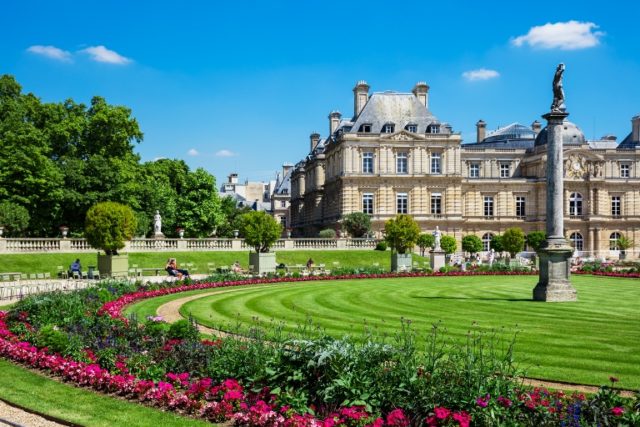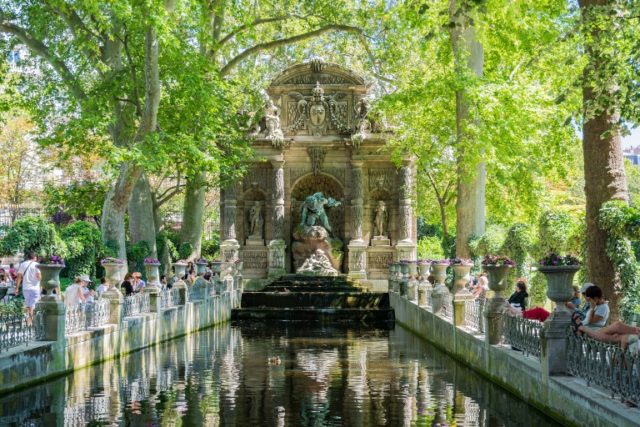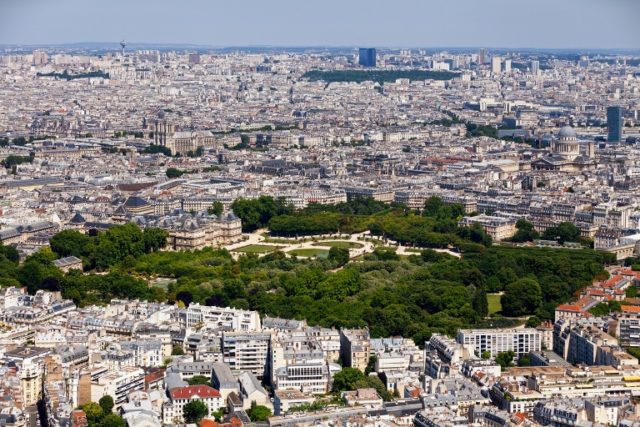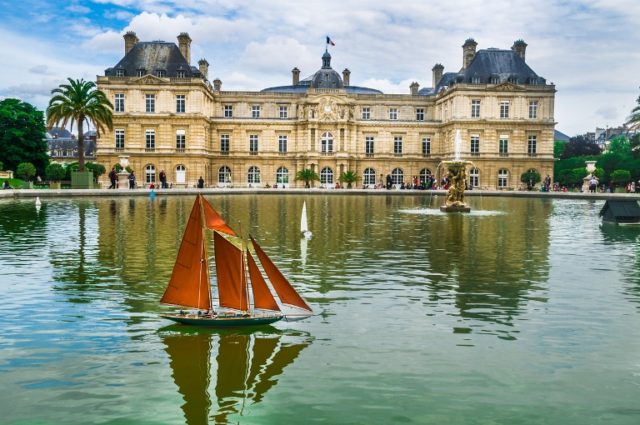For centuries, the historic park in the center of Paris has offered an escape from the crowded and noisy streets of the city. Initially, it was a favorite green space for socializing among the French nobility and nowadays is a popular relaxing site for locals and tourists. The beautiful garden is the second largest of its kind in the city, created by a Queen of France, Marie de’ Medici.
She decided to move from her permanent residence, the Palais du Louvre, after the assassination of her husband, King Henry IV. For this purpose, in 1612, the Queen bought land that belonged to the Duke of Luxembourg and began constructing her new palace and gardens.

Queen Marie was born in Florence, a member of the Medici family. She spent most of her childhood in the Pitti Palace and the Boboli gardens, so she decided to model her new palace and gardens after them. For Jardin du Luxembourg, she commissioned some of the greatest hydraulic engineers and garden designers, including Tommaso Francini. Francini’s design was influenced by the model of the Italian Renaissance gardens. He built the terraces and parterre, and the most famous fountain in the garden called the Fontaine Medicis (the Medici Fountain).

The fountain was designed due to a special demand of the Queen’s. It resembled a grotto and was decorated with a marble statue of Venus and the coat of arms of the Medici family. The Queen wanted to demolish the Carthusian monastery located in the south of the palace in order to enlarge the garden, but the monks were determined not to leave the monastery. It wasn’t until 1630 that the garden was finally expanded, however not by demolishing the monastery. Instead, the son of Marie de’ Medici bought additional adjoining land.
The new part of the garden was designed by Jacques Boyceau de la Barauderie, famous for designing some of the gardens of Chateau de Versailles. He added more symmetry to the new garden and built a large octagonal basin, giving it a more formal French garden style. The garden was opened as a public park in 1642 by Gaston of Orleans, the third son of Marie de’ Medici. After his death, the garden was neglected until the late 18th century.
Many prominent French architects worked on restoring Jardin du Luxembourg. They also made some alterations to complete the look of the garden. For instance, the architects proceeded with the original idea of the Queen and demolished the monastery to expand the garden. Also, they renovated and changed the position of the Medici Fountain.

It was brought to its present location and the missing sculpture of Venus was replaced, along with sculptures representing the Greek mythological figures Polyphemus, and the nymphs Acis and Galatea. The additional ornamentation of the garden included statues of the goddess of the hunt Diana and the god of the forest Faunus. The architects also brought the Fontaine de Leda to the Jardin du Luxembourg and attached it to the back of the Medici Fountain.
The most significant modification of the 19th century was the addition of many statues of poets, musicians, scientists, and politicians, as well as saints and queens, mostly of French origin. Arguably the most famous sculptures are the twenty prominent females around the octagonal basin known as “Queen of France and illustrious women.” The Queen is obviously the creator of the garden Marie de’ Medici.

Around the garden, there are also sculptures of animals and gods and goddesses from the Greek and Roman mythology. The statue that no one expects to see in the garden is a miniature of the Statue of the Liberty, given as a present by Auguste-Bartholdi.
The colorful flower beds and the centuries’ old apple and pear trees complete the perfect picture of the popular historic garden. Jardin du Luxembourg is included in many literary works, including Victor Hugo’s Les Miserables, in which it is the location of the first encounter between Marius and Cosette.
